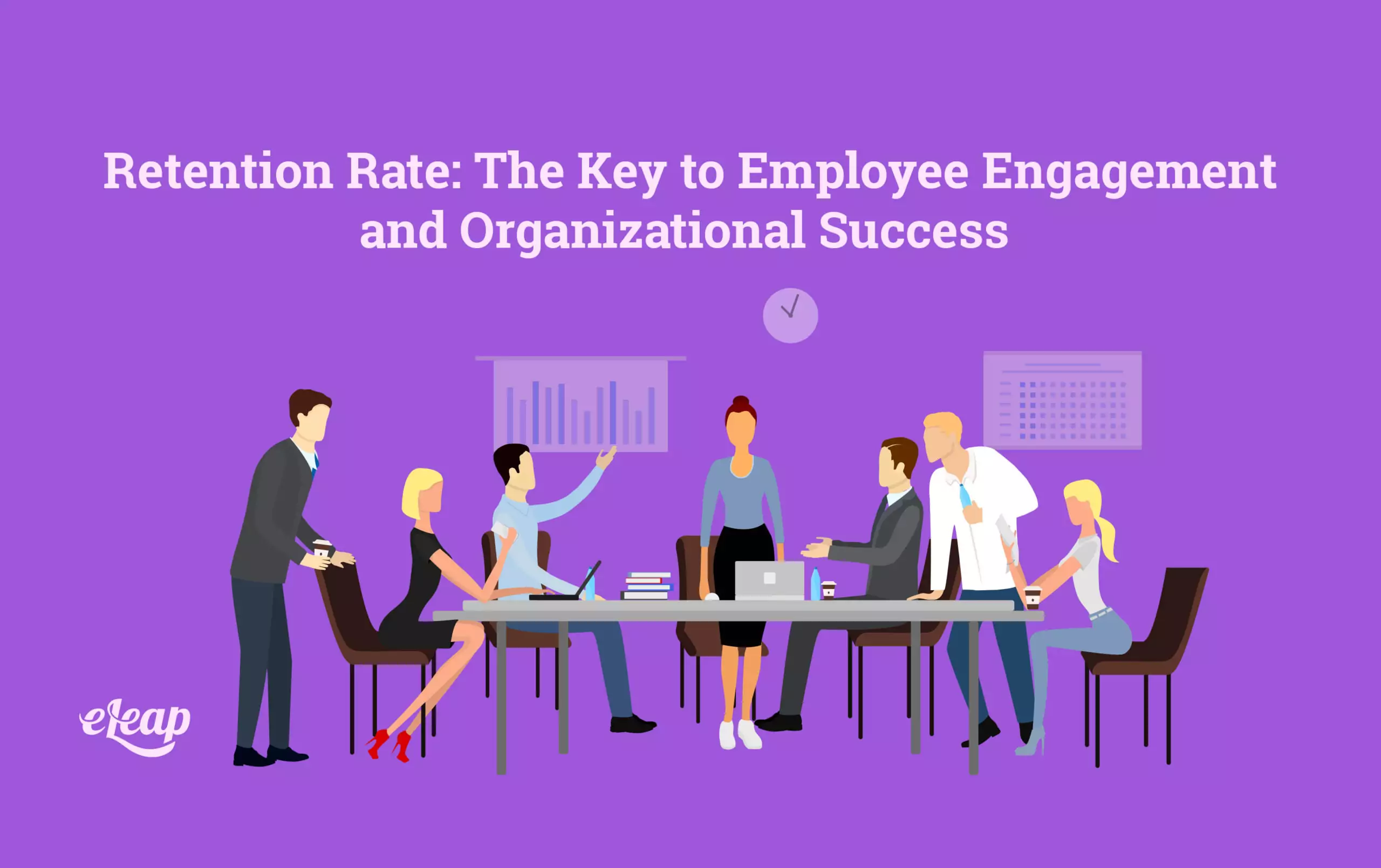Retention Rate: The Key to Employee Engagement and Organizational Success

Retention rate refers to the percentage of employees who remain with an organization over a specific period. It is a measure of employee retention and is commonly used in human resources to assess the effectiveness of retention strategies and the overall satisfaction and commitment of employees.
Voluntary Retention:
Voluntary retention refers to employees who stay with an organization of their own volition. They are satisfied with their current job and have no intention of leaving. Voluntary retention is often associated with positive work environments, reasonable compensation, career development opportunities, and a robust organizational culture.
Involuntary Retention:

Involuntary retention occurs when employees remain with an organization due to factors beyond their control, such as contractual obligations, lack of alternative job opportunities, or limited employment options in the market. Involuntary retention may not necessarily indicate high levels of job satisfaction or engagement.
Retention Rate Calculation:
The retention rate is calculated by dividing the number of employees who continue with the organization over a specific period by the total number at the beginning. The result is then multiplied by 100 to obtain the retention rate percentage.
Attrition Rate:
The attrition rate is the opposite of the retention rate. It refers to the rate employees leave or separate from an organization over a specific period. Attrition and retention rates are often used together to analyze workforce turnover and assess employee retention efforts’ overall stability and effectiveness.
Turnover:
Turnover is a term used interchangeably with attrition and refers to the movement of employees out of an organization. It encompasses both voluntary and involuntary separations. The turnover rate is the numerical representation of turnover and is often expressed as a percentage.
High Retention Organizations:
High-retention organizations consistently maintain a high percentage of employees over time. They have robust retention strategies, cultivate a positive work culture, provide competitive compensation and benefits, prioritize employee development, and foster solid employee-manager relationships.
Employee Engagement:
Employee engagement refers to employees’ emotional commitment and level of involvement towards their work, organization, and goals. High employee engagement is often correlated with high retention rates, as engaged employees are more likely to stay with an organization and contribute to its success.
Churn:
Churn is a term sometimes used interchangeably with turnover. It specifically refers to the rate customers or clients discontinue using a product or service. In human resources, churn can be used to describe the rate at which employees leave a company.
Retention Strategies:
Retention strategies are proactive measures organizations take to retain employees and reduce turnover. These strategies include competitive compensation and benefits, career development opportunities, work-life balance initiatives, employee recognition programs, and fostering a positive work culture.
The success of any organization depends significantly on its ability to retain talented and motivated employees. Retaining top talent is a crucial challenge companies face in today’s competitive job market. This article explores the concept of retention rate and provides insights into strategies for improving it.
What is the Retention Rate?
Retention rate refers to the percentage of employees who continue working with an organization over a specific period. It is a metric used to measure employee retention and gauge the effectiveness of an organization’s efforts to retain its workforce.
The Significance of Retention Rate
High retention rates are indicative of a healthy and thriving organization. Employees staying with a company fosters continuity, stability, and productivity. A high retention rate reduces recruitment costs, maintains institutional knowledge, and contributes to a positive work culture.
Factors Affecting Retention Rate
Several factors influence the retention rate within an organization. These include job satisfaction, career development opportunities, work-life balance, organizational culture, compensation and benefits, leadership effectiveness, and employee engagement.
Calculating Retention Rate
To calculate the retention rate, divide the number of employees who stay with the organization by the total number of employees at the start of a given period. Multiply the result by 100 to obtain the retention rate percentage.
The Benefits of a High Retention Rate
Organizations with high retention rates enjoy numerous benefits. These include increased employee morale, improved team dynamics, enhanced productivity, reduced recruitment and training costs, higher customer satisfaction, and a positive employer brand reputation.
Creating a Positive Work Culture
Employees need to feel valued and respected at work to improve retention rates. Cultivate an environment where open communication, collaboration, and work-life balance are prioritized.
Employee Engagement and Retention
The likelihood of an employee staying with an organization is higher when he or she is engaged. Promote employee engagement through meaningful work, clear goals, opportunities for growth, and regular feedback.
Leadership’s Role in Retention
Effective leadership plays a vital role in employee retention. Leaders should provide guidance, support, and opportunities for professional development. They should also recognize and appreciate their team members’ contributions.
Enhancing Career Development Opportunities
Offering employees avenues for career growth and skill development is essential. Provide training programs, mentorship opportunities, and clear career paths to help employees advance.
Effective Communication and Feedback
Establish channels for transparent and effective communication. Regularly provide feedback to employees, recognize their achievements, and address any concerns promptly.
Work-Life Balance Initiatives
Promote work-life balance by offering flexible work arrangements, wellness programs, and time-off policies. Encourage employees to prioritize their well-being and maintain healthy work-life integration.
Competitive Compensation and Benefits
Ensure your organization offers competitive compensation packages and benefits that align with industry standards. Regularly review and benchmark salaries to attract and retain top talent.
Recognizing and Rewarding Employees
Recognize and reward employees for their hard work and accomplishments. Celebrate milestones, provide incentives, and create a culture of appreciation to foster a sense of belonging and loyalty.
Conclusion
The retention rate is a critical metric that reflects an organization’s stability, engagement, and success. Organizations can create a positive work environment by implementing strategies to improve retention, enhance employee engagement, and secure long-term success.